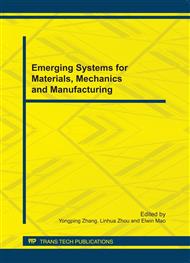p.636
p.641
p.646
p.651
p.656
p.661
p.666
p.671
p.676
Feature Analysis for Shadow Detection
Abstract:
In minimally invasive surgery (MIS), depth estimation is also one of the most essential challenges. With the urgent demands of improving surgical safety, a method of improving the surgeon’s perception of depth by introducing an “invisible shadow” in the operative field has been proposed. A novel approach is presented for adaptive shadow detection by incorporating four different attributes and using a classification algorithm to make a distinction between shadow and non-shadow regions. Experimental results show that shadow region can be detected quite well and thus the method could potentially be used as an instrument navigation aid in minimally invasive surgery.
Info:
Periodical:
Pages:
656-660
Citation:
Online since:
October 2011
Authors:
Keywords:
Price:
Сopyright:
© 2012 Trans Tech Publications Ltd. All Rights Reserved
Share:
Citation:


